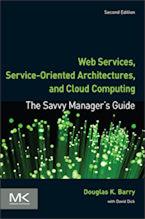Address XML
Address Data Interchange Specification (ADIS): XML specification for the interchange of address data both domestically and internationally. It is based on storing the parts of an address, or address elements, and then combining them together with intelligent editing to create output formats, or renditions, for particular mailpieces. It includes data about the addresses, such as whether they are complete or missing particular elements that affect address quality. Organization: IDEAlliance. More information: ADIS page on the IDEAlliance website.
eXtensible Name Address Language (xNAL): XML specification for managing name and address data regardless of country of origin. It consists of two parts: xNL, eXtensible Name Language, to define the name components, and xAL, eXtensible Address Language, to define the address components. xNL and xAL are part of the OASIS Customer Information Quality (CIQ) family of specifications. Also see xCRL and xCIL. Organization: OASIS.
Mail.XML: XML specification for communication between industry members and from industry to the final mail processing and delivery organization that delivers the mail to the end consumer, e.g., USPS. Organization: IDEAlliance. More
information: Mail.XML page on the
IDEAlliance website.
Context for Address XML
Related Articles for Address XML
- Computing Environment XML
- Content Syndication XML
- Customer Information XML
- Electronic Data Interchange (EDI) XML
- Geospatial XML
- Human XML
- Localization XML
- Math XML
- Open Applications Group Integration Specification (OAGIS)
- Open Office XML
- Topic Maps XML
- Trade XML
- Translation XML
- Universal Business Language (UBL)
- Universal Data Element Framework (UDEF)
Author
Douglas K Barry
Principal
You may use this material for your work or classes. Reprint Policy. Be sure to check the menu at the left for other articles available on this site.
The Savvy Manager's Guide
Douglas K Barry is also the author of a book that explains Web Services, service-oriented architecture, and Cloud Computing in an easy-to-understand, non-technical manner.
Web Services, Service-Oriented Architectures, and Cloud Computing: The Savvy Manager's Guide (Second Edition)
by Douglas K Barry with David Dick
This is a guide for the savvy manager who wants to capitalize on the wave of change that is occurring with Web Services, service-oriented architecture, and—more recently—Cloud Computing. The changes wrought by these technologies will require both a basic grasp of the technologies and an effective way to deal with how these changes will affect the people who build and use the systems in our organizations. This book covers both issues. Managers at all levels of all organizations must be aware of both the changes that we are now seeing and ways to deal with issues created by those changes.

